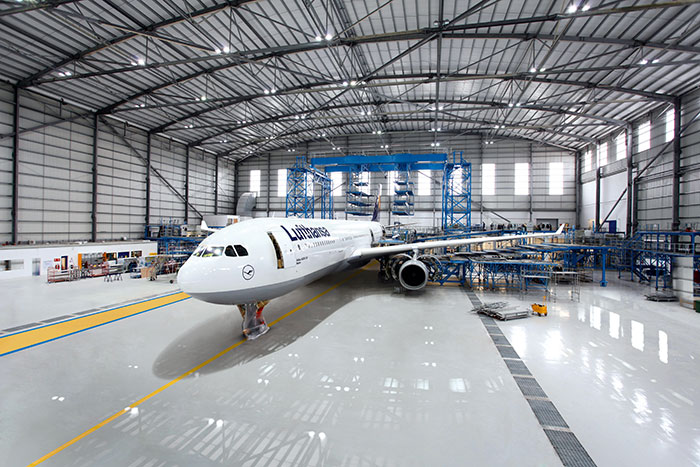Aircraft Hangar Flooring Advice from Flowcrete Middle East
 Other News
Other News Subscribe to newsletter
Subscribe to newsletter
| 20 Jul 2014 |
To help the operators and designers of aircraft hangars choose the right flooring system Flowcrete Middle East has created a whitepaper focusing on the key issues these environments face.

The design of an aircraft hangar’s interior has to take into consideration a wide variety of intricate and complex activities that not only involve expensive assets and sensitive equipment but which are also rife with fire hazards and safety risks.
Ensuring a hangar has the right floor is vital to making sure that the facility can cope with these on-site demands and challenges - as not only does the maintenance crew require a sturdy, anti-slip and easy to clean surface but the floor can also play an important role within the hangar’s space management, when moving aircraft around and even during deployment of the fire suppression system.
The whitepaper, entitled What are the Main Considerations when Selecting a Floor Coating Material for Commercial and Military Aircraft Hangar Facilities, looks into all these different factors to explain why the choice of flooring is important, how it can help to maximise the operational effectiveness of a hangar and the consequences of installing an inadequate solution.
Vik Vithlani, the Flowcrete Middle East Sales Director, said: “Aircraft hangars are becoming ever larger and more specialised environments. For example the Emirates Engineering facility at the Dubai International Airport covers an area of 17 football pitches and consists of eight hangars with 88 metre wide gates where every bay can accommodate any aircraft, including the massive Airbus A380.
“We’ve created this whitepaper to help industry professionals understand how they can make the most of the floor area within a hangar, as like every other aspect of the site the floor has to keep pace with modern developments.
“Advances in flooring technology mean that systems are available which have been tailored to today’s aviation industry to ensure long lasting surfaces that improve a hangar’s effectiveness, safety and cleanliness.”
It is important to consider the amount of damage that the hangar’s everyday activities will cause to the floor, such as the spillage of corrosive chemicals like hydraulic fluid and jet fuel or from heavy equipment and tools that get dropped on the ground.
Resin systems are much better at coping with these on-site demands than concrete, avoiding floor failures that could seriously impact the operational efficiency of the hangar.
Facility managers can also make use of the versatility of resin systems to add anti-slip finishes into wet work areas or to incorporate signage into the floor that aids the crews’ navigation within a busy environment where one wrong movement can quickly become a costly mistake.
The wide variety of flooring options and the specific requirements of different hangars can make it difficult to identify the ideal solution. Flowcrete Middle East’s new whitepaper is the ideal starting point for anyone looking to enhance their understanding of flooring within this environment to make the best possible decision during the specification process. For more information download the whitepaper from the Technical Zone of www.flowcrete.ae




